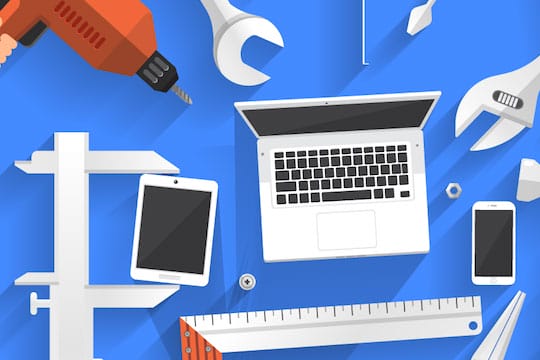Smart manufacturing is the new celebrity term in the sector. But what does it involve? In the new age of information technology and automation, the manufacturing industry seems to be on the verge of a fundamental change; a change of approach, methods, and technologies, all due to make businesses of all sizes in the field more profitable and safer.
Smart manufacturing is a path to growth, as specialists explain. According to them, those who don’t invest in smart manufacturing means and robotics are doomed to miss out on all the benefits brought by technology.
Below are described some of the biggest manufacturing trends in 2019 that will make businesses adopting them more profitable and productive.
1. IoT

The Internet of Things is growing in importance, and both private users and businesses seem to leverage more and more its applications and interconnectivity. IoT can help businesses that adopt such technology to increase their efficiency and safety levels while lowering costs. The Internet infrastructure is today more complex than ever, and it allows easy interconnectivity of different devices and tools.
Businesses in the manufacturing sector can profit from it and use it in their advantage. Apart from the advantages mentioned below, specialists identify several more: higher compliance capabilities and higher product innovation possibilities.
Most companies interviewed in a recent study claim that IoT will grow their profitability over the following years. Over 60% of the interviewed companies claimed they are due to invest more than $250 billion in IoT and its application, by the end of next year.
IoT and interconnectivity help decision-makers in the manufacturing industry take more informed decisions and analyze information and data in real time. This increases the rapidness with which crucial decisions can be made and the success rates of new strategies implemented by businesses in the sector.
Moreover, most manufacturing processes already incorporate IoT devices that help companies improve their workflow. Those companies who lack such tools plan to adopt them over the following months, according to this study.
Recommended for you: 4 Ways Technology Can Help Increase Your Sales.
2. Predictive Maintenance

Manufacturing companies are heavily reliant on their equipment and tools. Unexpected breakdowns can slow down and potentially stop the production flow altogether. This costs companies a lot of money, taking into account the repairs, loss of productivity, and downtime. These are the factors that influence the expenses sustained by a company in case of breakdowns. Manufacturers still have to ensure their equipment is in prime form and condition, to prevent such events from appearing. While until recently, the only way to decrease the chances of a breakdown was through regular checks; predictive maintenance is a piece of innovative technology that will help businesses in the sector in this regard.
Inclusive adoption of predictive maintenance technologies is doe to help companies reduce the overall maintenance costs by 20%, according to this McKinsey & Company research. By automating data collection and processing, manufacturers can identify and prevent breakdowns and malfunctions from appearing. They can take the necessary steps to fix functionality concerns before they become threatening for the businesses’ productivity and profitability. Such capabilities will help businesses save time and money, and prevent wasting resources.
3. Supply Chain Automation

Remaining competitive and relevant in today’s industry is a goal all companies in the sector try to achieve. They want to deliver better and better products, in shorter timeframes, and with reduced costs. Although adjusting prices is a good strategy to grow competitiveness, leveraging capabilities like better supply chain management technologies can also boost productivity and competitiveness. Being able to operate your manufacturing company easier and more efficiently is actively reducing costs and raises customer satisfaction and retention levels. By implementing technologically advanced supply chain management solutions, companies will enjoy better results in the following areas.
- Raw material procurement.
- Manufacturing optimization.
- Better and smoother logistics.
- Better product life management capabilities.
- Inventory Optimization.
- Network Optimization.
- Sales and operations planning.
4. Collaborative Robotics

Co-bots are one of the most beneficial applications of automation, big data, and IoT. They are safe, increase control over the manufacturing process, and they are cost-effective. Collaborative robots can be used at all production levels and in all production departments. They enhance employee’s accuracy and increase workplace safety standards. According to Universal Robots, collaborative bots can be used in a series of key-applications and tasks, like packaging, painting, polishing, on assembly lines, etc. The industry with the highest levels of co-bot adoption rates is the automotive industry.
But the manufacturing sectors where these intelligent robots can be used to lower costs and increase employee safety levels are not limited to the automotive sector. Agriculture, aerospace, furniture manufacturing, and wood processing, these are all areas with high application rates of collaborative robots.
5. Big Data

Sensors and IoT are changing the manufacturing industry to the core. With sensors installed on most key surfaces in manufacturing plants, data can now be collected and interpreted with more ease and higher accuracy levels. Combining data from multiple sources and analyzing it offers decision makers the possibility to understand their business, internal processes, and workflow at a more detailed level.
Big data and new analytics capabilities allow businesses to optimize their operations and address issues ahead of time, improve production flow, and products themselves.
6. VR and AR Applications

Virtual reality and augmented reality can be used for assistive purposes, similarly to collaborative robots. These two technologies can be used during the modeling and prototyping phases of the manufacturing process. They can be used by engineers to assess the functionality, and bring rapid modifications to their products before starting the manufacturing process.
VR and AR applications can boost the productivity of the employee by allowing them to receive real-time help when performing complex tasks. They can also be used to identify dangerous scenarios and they can prevent workplace accidents from happening.
You may also like: Home Automation – Our Immediate Future in Technology.
Final Words

Technology opens new gates to those businesses ready to adopt it and use it at its full potential. Companies in the manufacturing sector seem to be more open to adopting such capabilities and boost their productivity.





